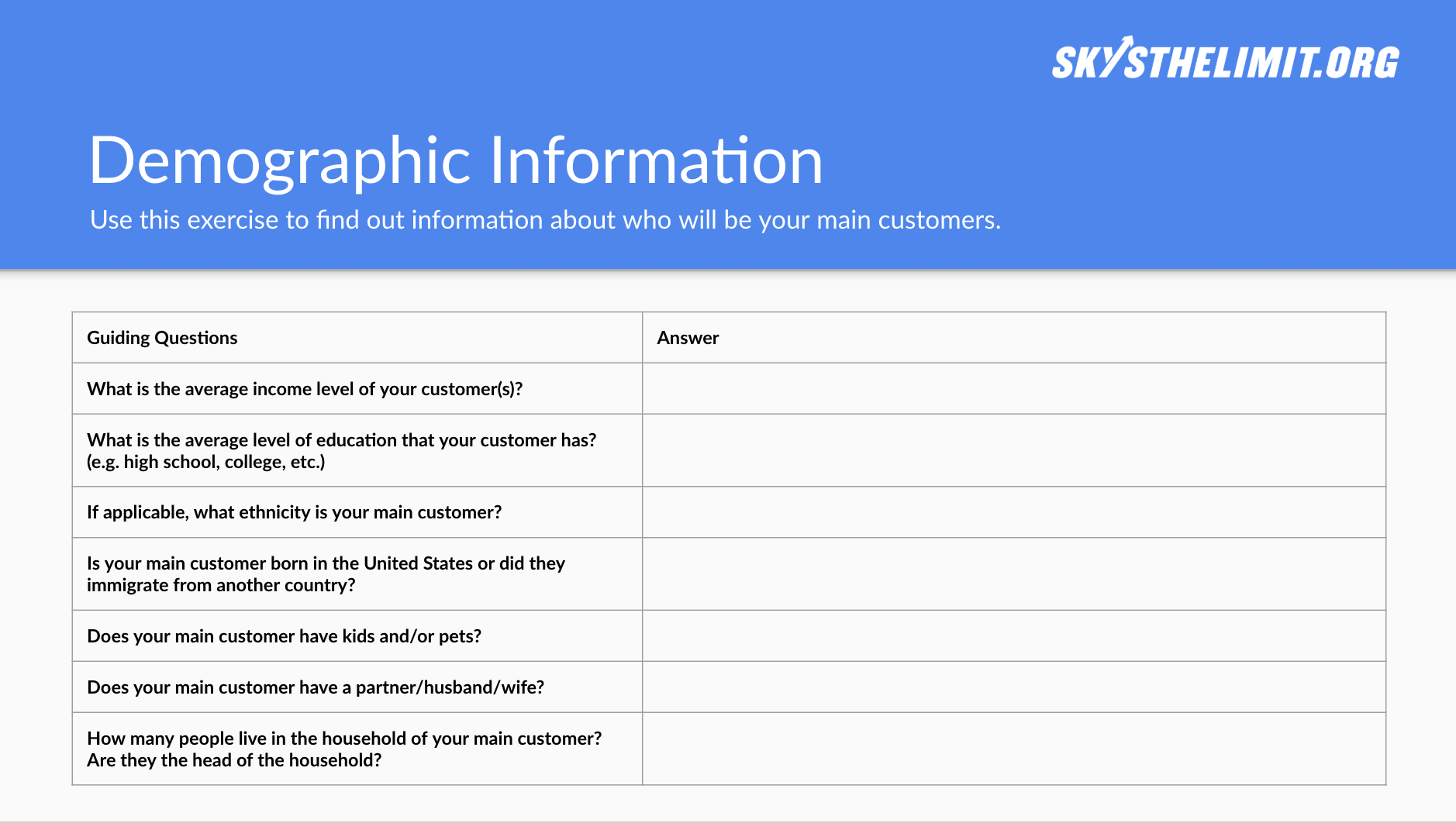Customer segmentation
Customer Deep-dive
Click the button to copy our template to your Google Drive
What is customer segmentation?
Your customer segment will define the market you want to enter. When you segment your customers, you simply group individuals that are similar in specific ways relevant to marketing, such as age, gender, interests and spending habits.
Before we get started, copy the Customer Deep-dive powerpoint template to your Google Drive and begin defining your customer segments.
How do I segment my customers?
Businesses typically group their customers based on demographics and behaviors. You can choose to use either one or both depending on what your product or service will be.
Demographic segmentation is defined as descriptive data about people. It uses markers that describe how different populations live and define themselves. It is the most common form of customer segmentation, or ways to group customers, because you separate customers who are fundamentally different and will probably receive marketing messages differently.
For example an ad stating “$150 running sneakers with arch support, perforations throughout for additional breathability and high top to protect your ankles” will be perceived differently by a sponsored college basketball player and my a middle income mom of 5. Our basketball player may be interested in all the features, while the mom may have been stunned by the price tag.
Some examples of demographic segments you should consider are:
Gender
Age
City or area where your customers live
Average income
Typical profession
Education level or background
Ethnicity
Citizenship requirements: US citizens, Residents, Visa / other
Hobbies
Sports
Religious beliefs
Relationship Status
Children
Pets
Number of people living in your customer’s household
Political preference
Body shape / physique: Tall/short, Slim/full bodied
Clothing style: Formal, Classy, Urban, Hippy, Casual,
Favorite pastimes: Travel, Spending time with friends, Playing video games, Sports…
Causes your main customer cares about: Animals, Environment, Health, Children
Behavioral segmentation looks at how and when a consumer decides to spend their money on a product or service. It focuses on consumers’ shopping behavior, how they make their decisions, why they choose one product over the other, and how they feel about a product, company, or service.
Some examples of behavioral segments you should consider are:
Purchasing behavior
Occasion purchasing
Customer usage
Benefits
Loyalty gauge
Buying stage
Why is it important to define segment my customers?
It is important to define your target audience because it will inform how you choose to communicate with customers. Effectively communicating benefits to the consumer is a crucial step for all businesses. Though a variety of outlets through which a good or service can be promoted exists, you will need to think about which channels you will use to deliver your messages. Some channels may include social media, TV ads, search engine ads, newspaper ads and many more.
Whether it is for the purpose of launching a new product or for the purpose of doing a fresh perspective study with an aim to revamp an already existing product line-up, it is imperative that the business is up-to-date with the dynamics of an ever-changing market. If it does not do so, its competitor probably will do it and stay ahead of the game.
Pro Tip
The right marketing message at the right time is an essential element for every business, especially new businesses and it can make or break the success of your company. Make sure you narrow the range of potential customers to the ones who are willing and able to buy your product.







